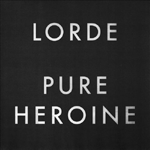This review page is supported in part by the sponsors whose ad banners are displayed below |
 |
 |
"Team" from the 24/48 download Lorde: Pure Heroin [Lava Music/Republic Records] is Pop with bite and good spatial manipulation. The arrangement has soft vocals with highly layered overdubbing and quick defined bass lines. This cut makes a good companion piece with the other hit "Royals" on the same album.
|
 |
"Dirty Paws: Of Monsters and Men" from the 24/44.1 download Secret Life of Walter Mitty: Music from and Inspired by the Motion Picture [Republic Records] is a strong soundtrack with a wide eclectic mix spanning Bowie remixes to Hall and Oates covers. It’s fun stuff that’s quite well produced. There’s some compression but 24-bit dynamics afford better low-level information. This cut has a tasteful duet with dense background vocals that evoke 60s folk material revamped with 21st century soft rock. |
|
|
We get billows of artificial air, intentional distortion on some instruments, clean miking on others. It’s an ambitious album with a refreshingly offbeat style. "Take 5" from Time Out: Dave Brubeck Quartet [Columbia Legacy CK65122] is soft jazz in a classic clean recoding that offers a different interpretation from the Jazz at the Pawnshop version. Outstanding performances with strong drum work in a pronounced room acoustic make for a 1959 jazz standard that holds up.
|
 |
"Suite Española: Austrias" from FIM Super Sounds III [FIM XR24 073] is a Winston Ma remaster of material by Spanish composer Albéniz originally cut in 1967 by conductor Rafael Fruhbeck de Burgos with the New Philharmonia Orchestra for Decca. Think fiery dynamics plus sweet subtlety that contrasts against the assaults. Think beautifully captured instrument weight and tonal density in layered detailed textures. Originally engineered by the team of Wilkinson and Reeve, it’s been brought back to full potential by Mr. Ma’s careful hands. |
|
|
|
 |
"Lose Yourself to Dance" from the 24/88 download of Random Access Memories: Daft Punk [Columbia] represents the album’s infectious bouncy homage to 1980s dance beats. Featuring Pharrell William,s it has a steeply transient bass lines, detailed guitar work and some playful panoramic vocal effects for a nice representation of the musical craze of yesteryear in a modern context. The higher resolution format doesn’t hurt either. |
|
|
 |
| |
|
|
Onto the main event in 2 rounds. I decided to throw the Codia stand a challenge. First sessions were conducted minus any additional isolation tweaks. This gave Codia exclusive responsibility for resonance management. This would reveal any specific sonic signature, strengths or weaknesses. In the second round my usual outboard isolation devices would be restored one by one to gauge the nature and extent of change. The Codia Acoustic Design promised the looks and engineering potential of a feisty contender. Would it emerge acoustical prizefighter or resonant disappointment when the system powered up?
|
 |
From the first notes the Codia-carried system showed the ability to remove itself from the sonic equation. Put simply, I detected no additive traits. The inherent tonal balance and quick response of the Wyred DAC-2 and Bel Canto Evo 2004 were accurately preserved,with the Wyred demonstrating a little leanness in the upper octaves, the Bel Canto a mild leanness in the upper bass. Overall the system response had an almost Quad 57 sense of rightness that was eminently listenable, albeit with better dynamics and extension than our venerable Quad. The Codia also rendered an immense illuminated soundstage of Cinerama width and depth with big cushions of air and moderately good specificity of objects within the hall. The component combination demonstrated very respectable dynamics with priority centred on the midrange. This effect was quite similar to the CA Electronics ceramic isolators. Detail was generous, dense and delineated. Attack and decay were complex, steep where required and subtly layered on acoustic instruments.
|
|
|
Isolation from subsonic bombardment and dynamic assaults proved very effective. The design kept quite a large amount of energy away from the components. It was possible to overload the dissipation abilities of the stand but only at unreasonable levels. Then the result was a slight loss of dynamic composure in the upper mids with challenging material, nothing more. Since this is a standard I generally achieve with a combination of extremely sophisticated isolation tweaks, those were high marks for the Codia.
|
 |
The Stage1000 proved itself a capable performer in the standalone challenge. This prompted some interesting anxiety. Had my system potential already maxed out or were new heights still within reach? Time to move to round two and give the Codia some added support. The results were quickly discernable and all positive. The isolation abilities of the Codia allowed the outboard resonance tweaks to dedicate their attention principally to the audio components and not deal with vibration coming through the stand. The outboard tweaks weren’t problem solving. They were refining. That translated as overall subtle gains in component performance. Soundstage size remained intact but image focus became tighter, the distance between objects and instrumental layering more distinct. Hall information was more detailed and reverberation more complex. Instruments in the soundstage gained palpable dimensionality demonstrating a "lit from within" vividness. Dynamics? No more slight midband favouritism. They now showcased full broadband swing and improved gradation. More punch, detail and higher sophistication.
|
 |
  |
 |